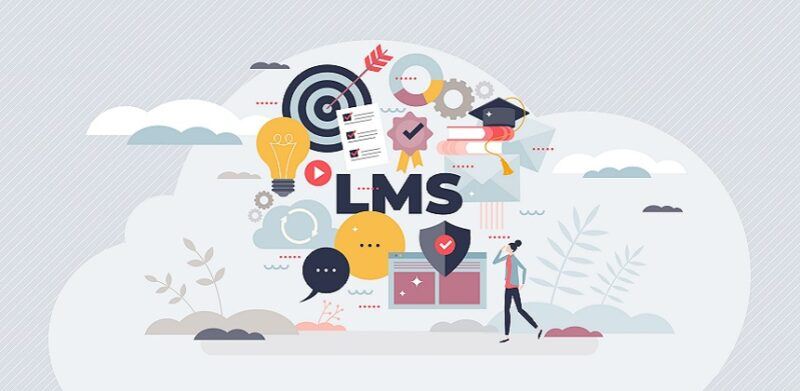
Trending Forms Of Content
Today you can get hosted solutions because setting up a Learning Management System (LMS) is not a simple task. However, once the fundamental framework is in place, everyone working for the business should be able to adjust, add, change, or remove learning material. Organizations have the opportunity to swiftly and effectively provide training to staff members all across the world thanks to cloud-based LMSs. Launching an LMS is one thing, but long-term content initiatives are sometimes disregarded.
An implementation strategy for managing and developing content is essential for companies looking to integrate a successful training platform. The LMS is available to all employees, not only those new to the company. It is a tool for staff members and managers alike. They can use it to get better at their jobs and move up in the company. There are many different forms of content that may be used in a Learning Management System. However, we have covered some critical types of content that should be on every organization’s bucket list.
Trending Forms Of LMS Content You Can’t Ignore
1. Personalized Content
Creating and maintaining balance is critical. Yes, premade content is a proven form of eLearning content; however, personalization has its own worth. Tests, unique quizzes, training modules, slideshows, and a 100% white-label LMS platform can all be personalized for content. The idea is to share information pertinent to the organization’s objectives and targets.
You can design customized content for a custom LMS development platform to cover everything staff members need to know to give the business their best work. Personalized content can be costly. However, there are different ways you can rely on to get a hosted LMS. All you need then is to find the gaps and fill them, and you are good to go.
2. Multiformat Content
Organizations frequently look for eLearning solutions for employees and students to access various digital resources. When comparing Learning Management Systems, eLearning resources include audiobooks, eBooks, infographics, video lectures, quizzes, and presentations. LMS platforms that accept various digital content will be preferred in 2022.
Moreover, an LMS system that enables students to learn by reading eBooks, viewing video lectures, or listening to audiobooks will win decision-makers’ hearts. Also, a lot of organizations favor LMS programs that include digital libraries.
3. Webinar
Thanks to the internet, companies or institutes may now organize live sessions and webinars from any location and stream them to their employees. Today, companies can thrive when their webinar content for LMS offers a blend of live and prerecorded content. A webinar is like reinventing a traditional form of LMS content to increase its effectiveness.
With webinars and LMS content, organizations can professionally educate individuals on a subject and enhance their existing knowledge base. It’s a given that people will have a greater sense of connection during live training classes or one-on-one training sessions which can skyrocket their ability to learn and retain information.
4. Podcasts
Podcasts are becoming the go-to way to deliver eLearning content. They offer excellent supplements to the lessons offered on your LMS platform. A podcast channel can help a company become known as an expert in a certain field or market. Learners may listen to them while traveling to work or in line at the grocery store. The freedom to consume content on the move gives podcasts a distinct upper hand over other forms of content.
Another way to look at podcasts is that they can benefit people who are constantly pressed for time, such as most office workers. Integrating podcasts into the LMS allows your employees to listen to additional podcasts while driving home after investigating the subject through slides, texts, quizzes, and videos, in which industry professionals discuss how to put notions into reality.
5. User-Generated Content (UGC)
People question this type of content as a component of an LMS forum. However, it has a proven record of being useful. Moreover, it makes learners feel valuable as they get the sense of contributing something. Once businesses install an LMS, it’s key to start a database for UGC. User-generated content could be in the form of a video share, a text-based post, or even the creation of a training module for other employees.
Because it needs more oversight, some businesses remain hesitant to allow learners to contribute content. However, UGC has been fairly successful because it offers an environment where people can participate through the LMS. They feel a part of the eLearning, and it can be immeasurably successful if employees are permitted to provide training materials and advice as well.
6. Recorded Material
Many businesses accustomed to in-person training find it tough to create learning materials for their LMS platform. Recording live training events and uploading them to your LMS platform is a simple way to capitalize on your current in-person training while saving time and effort in creating LMS content. Use top-notch HD video cameras and microphones for high-definition video. Don’t forget to record the presenter’s slides using screen capture software.
Final Words
You can get multiple LMS platforms, but the main thing is which form of content you should choose for your organization. Undoubtedly, businesses can add a variety of learning content types to their LMS. More than most people understand, a well-designed and active LMS may benefit an organization and its employees.
